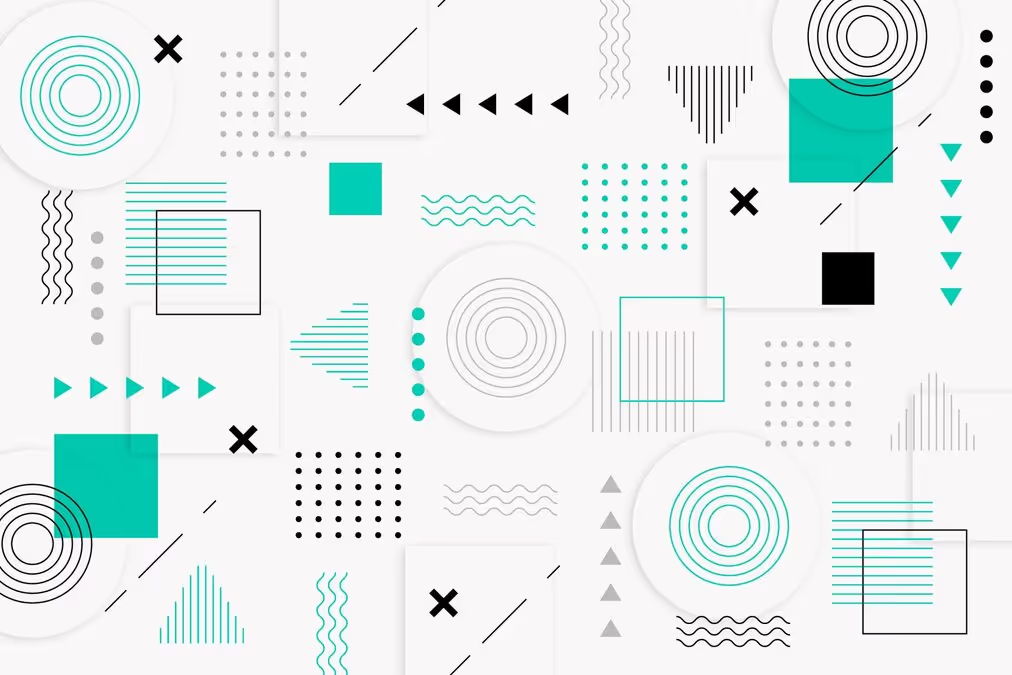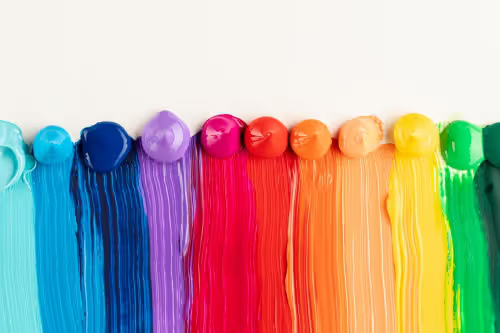From Web2 to Web3: How Web3 in Web Design Is Redefining Online Ownership
See how web3 in web design blends blockchain, wallets, and UX to create secure, decentralized, user-first digital experiences.

Designer skill is not the only thing crucial in creating visually attractive design works. It also needs design elements to create the composition. Therefore, you can get a design that is not only attractive but also communicates a message. While you may already familiar with elements of design, you may know it on the surface. Let’s dive deeper to understand the design elements to improve your work.

Design elements are the fundamental component every designer needs to create a visual composition. These elements help you convey your thoughts and intentions to your audience. Of course, each element has its own role visually. So, the design you create is not just a patch of elements with no intended use in mind. There are five basic elements in design that you can manipulate or combine as you need it.
The most basic element of design is lines. Do not ever think that lines are just boring elements. Because lines can appear in different forms, sizes, and colors, making them into something interesting. However, this element is not always what we can see. It can be invisible, such as grids that lend a structure to a design work.

The line itself is used to create shapes. It also defines boundaries. Different moods will emerge depending on the line form you use. For example, a young and fun vibe comes from a squiggly line, or a dynamic and energic vibe comes from a curved line. For your information, dashed and dotted lines still count as lines. So, you don’t need to be rigid with only using solid lines on the project. You can have fun only by using lines.
Adding shapes to your design can add aesthetic and visual values. If lines define boundaries, shapes are the result of defined boundaries. They are two-dimensional, enclosed areas. Geometric, organic, and abstract are the most common shape types. Just like lines, shapes can determine the mood depending on the color, form, and size.


Shapes play a significant role in creating patterns and visual hierarchy. You can manipulate their size, color, or position to get the best shape you need. Besides, they are one of the important elements in branding development, especially in logos. Whichever shape a brand chooses for its logo, it can convey the brand’s personality, values, and industry.
When you find a design project that evokes an emotion in you, then the colors do the job well. Both lines and shapes need color to convey different messages. So, the existence of this design element influences visual communication and the whole mood. This element of design includes attributes such as hue (color type), saturation (intensity), and value (lightness or darkness).

Note that there are two color systems used in design, RGB and CMYK. RGB (red, green, black) is a color system dedicated to digital design. This system is only suitable for use on screen. Meanwhile, for printing needs, use the CMYK (cyan, magenta, yellow, key-black) color system to produce more accurate colors.
Although we can’t touch texture in digital design works, texture, as one of the elements of design, adds depth to a 2D surface. It refers to the surface quality or feel of an object. It comes as a pattern, digitally created or mimicking the desired pattern. Just one type of texture use can change the overall appearance of your design. Therefore, it is not recommended to use more than one pattern as it can be overwhelming for the viewer.
As colors deliver different meanings and shapes & lines deliver different moods, different textures deliver different vibes. Every time you try a texture, you can try to imagine it when you touch it. Try different textures and feel the difference when you replace it. That way, you can find the texture that is closest to what you want and imagine.
Space refers to all areas, whether within, around, or between elements in a design. However, the most familiar term regarding space in design is negative space. Negative space refers to the empty or open space around elements. And, as the opposite, we have positive space. Positive space is the area occupied by the main subject/element. The effective use of space can enhance visual balance and clarity. Why is that?
Adequate spacing contributes to an aesthetically pleasing design. You will not find visual clutters and all information readable. Regarding the negative space, it provides a breathing room, allowing elements to stand out. Besides, well-managed space influences emotional responses. Therefore, designs are more accessible and engaging for viewers.
Achieving balance and clarity in design is not enough to know the elements of design. You also have to learn how to make every element you choose occupy its position and carry out its role well. Time and experience will help you get that sense. However, don’t let yourself start empty-handed. Understand the following to get a balanced and clear design.
Yes, the visual hierarchy will help in creating a good design. Establish a hierarchy by arranging design elements based on their importance. It ensures the key information is easily perceived. Use variations in size, color, and placement to guide the viewer’s attention and convey the intended message to make it stand out.
We can achieve balance without considering balance itself. Strive for visual balance in the layout. It doesn’t always have to be symmetrical because asymmetrical layouts can also provide balance. Distribute elements evenly to avoid overcrowding or leaving areas too empty. Because a balanced design contributes to a sense of stability and order.
Contrast helps differentiate elements. The viewer can easily distinguish between different components. Introduce contrast in color, size, shape, and texture to add visual interest. Hence, it makes significant information or focal points stand out.
As mentioned above, whitespace or negative space creates a breathing room in a design. It prevents visual clutter, provides clarity, and allows key elements to be more prominent. It contributes to a clean and organized visual presentation.
The complex design is ok. However, unnecessary complexity is better to be avoided. Viewers prefer clear, straightforward designs since they are easy to understand and remember. Minimize distractions to ensure message delivery and make the design more effective.
Mastering the elements of design is essential for creating visually compelling and communicative compositions. One can achieve balance and clarity by understanding the nuances of these design elements. The key lies in establishing design principles. Applying these principles ensures that every element occupies its position, contributing to a well-crafted and impactful design.